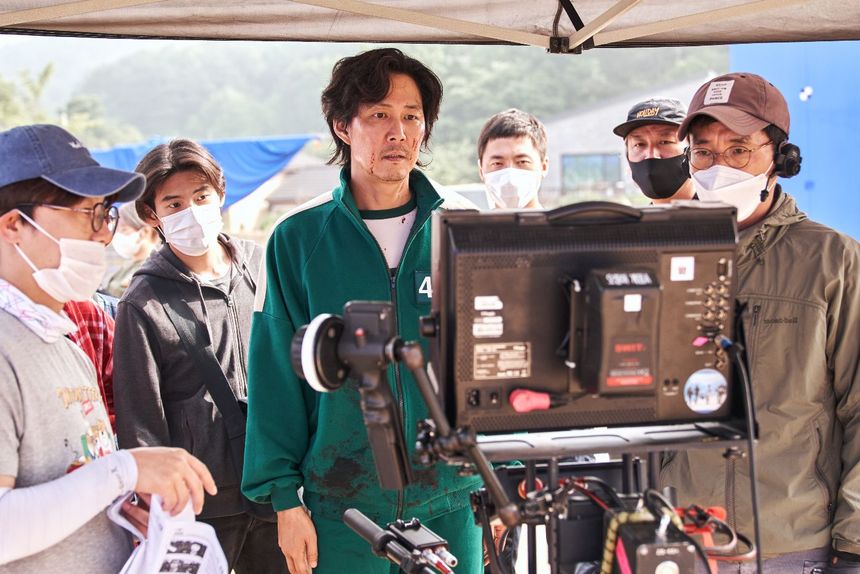Creating video games is a fascinating and complex process that involves creativity, technical expertise, and collaboration across various disciplines. From the initial concept to the final product, the development of a video game requires meticulous planning, innovative thinking, and a deep understanding of both technology and art. In this article, we will delve into the background and behind-the-scenes processes of making video games, exploring the stages of development, the roles involved, the challenges faced, and the evolving trends in the industry.
Introduction
The world of video games has grown into a massive industry, captivating millions of players worldwide with its engaging stories, immersive environments, and interactive gameplay. But behind every successful game lies a complex and multifaceted development process that combines technology, art, design, and storytelling. In this exploration of game development, we will look at how video games are made, from the initial spark of an idea to the finished product that delights players across the globe.
The Stages of Game Development
The process of creating a video game typically follows several key stages, each requiring distinct skills and expertise. While these stages can vary depending on the scope and type of game, the following breakdown provides a general overview of the game development pipeline:
1. Concept and Planning
The first step in game development is the conceptualization phase, where ideas are brainstormed and refined into a clear vision. This stage involves defining the game’s core mechanics, genre, target audience, and unique selling points. Developers often create a game design document (GDD), which serves as a blueprint for the game’s overall design and structure. This document outlines key elements such as gameplay mechanics, storylines, character designs, and technical specifications.
- Conceptualization: Brainstorming ideas and refining them into a clear vision.
- Game Design Document (GDD): A blueprint outlining gameplay mechanics, storylines, character designs, and technical specifications.
- Genre and Target Audience: Defining the game’s genre and identifying the intended audience.
- Unique Selling Points: Highlighting what sets the game apart from others in the market.
2. Pre-Production
During the pre-production phase, the development team begins to lay the groundwork for the game. This stage involves assembling the development team, finalizing the game’s design, creating prototypes, and establishing a project timeline. Developers may also start working on concept art, storyboarding, and writing scripts to flesh out the game’s narrative and artistic direction.
- Team Assembly: Gathering a team of designers, programmers, artists, and writers.
- Prototyping: Creating basic prototypes to test gameplay mechanics and concepts.
- Art and Storyboarding: Developing concept art and storyboards to visualize the game’s aesthetic and narrative flow.
- Project Timeline: Establishing a schedule for the development process, including milestones and deadlines.
3. Production
The production phase is where the majority of game development occurs. This stage involves creating the game’s assets, coding the mechanics, and building the game’s world. It’s a highly collaborative phase where various departments work together to bring the game to life.
- Art and Animation: Artists create detailed character models, environments, textures, and animations that define the game’s visual style.
- Programming and Coding: Programmers write the code that powers the game’s mechanics, physics, AI, and interactions.
- Sound Design and Music: Sound designers create sound effects, ambient sounds, and music that enhance the player’s experience.
- Level Design: Level designers build and design game levels, ensuring they are engaging, challenging, and visually appealing.
4. Testing and Quality Assurance
Once the game is in a playable state, it enters the testing phase. This stage is crucial for identifying and fixing bugs, balancing gameplay, and ensuring that the game runs smoothly on different platforms. Quality assurance (QA) testers play a vital role in this process, meticulously testing the game to find issues and provide feedback to the development team.
- Bug Identification and Fixing: Identifying and resolving technical issues and glitches.
- Gameplay Balancing: Ensuring that the game’s mechanics and difficulty levels are well-balanced.
- Platform Compatibility: Testing the game on various platforms to ensure smooth performance.
- Player Feedback: Gathering feedback from testers and players to make necessary improvements.
5. Launch and Post-Release Support
Once testing is complete and the game is polished, it is ready for launch. The launch phase involves marketing the game, distributing it across platforms, and monitoring its performance in the market. Developers often continue to provide post-release support, which may include patches, updates, downloadable content (DLC), and community engagement.
- Marketing and Promotion: Promoting the game through advertising, trailers, and social media campaigns.
- Distribution: Releasing the game on digital platforms, consoles, and physical copies.
- Post-Release Updates: Providing updates, bug fixes, and additional content to enhance the player’s experience.
- Community Engagement: Interacting with the player community and gathering feedback for future improvements.
Key Roles in Game Development
The creation of a video game involves a diverse team of professionals, each contributing their expertise to different aspects of the development process. Here are some of the key roles involved in game development:
1. Game Designer
- Role: Game designers are responsible for crafting the game’s overall design, mechanics, and player experience. They create the rules, systems, and gameplay elements that define how the game is played.
- Responsibilities:
- Designing core gameplay mechanics and systems.
- Developing the game’s narrative and story elements.
- Creating levels and designing player interactions.
- Balancing gameplay to ensure an enjoyable experience.
2. Programmer
- Role: Programmers write the code that powers the game, implementing the mechanics, physics, AI, and other technical aspects. They work closely with designers and artists to ensure seamless integration of assets and functionality.
- Responsibilities:
- Coding gameplay mechanics and systems.
- Implementing AI behaviors and physics simulations.
- Optimizing performance and ensuring platform compatibility.
- Troubleshooting and fixing bugs and technical issues.
3. Artist and Animator
- Role: Artists and animators create the visual assets that define the game’s aesthetic. They design characters, environments, textures, and animations, bringing the game’s world to life with stunning visuals.
- Responsibilities:
- Creating concept art and character designs.
- Designing environments, textures, and visual effects.
- Animating characters and objects for smooth movement.
- Maintaining visual consistency and style throughout the game.
4. Sound Designer and Composer
- Role: Sound designers and composers create the audio elements that enhance the player’s immersion in the game. They produce sound effects, ambient sounds, and music that complement the game’s atmosphere and tone.
- Responsibilities:
- Creating sound effects for characters, environments, and actions.
- Composing music that enhances the game’s emotional impact.
- Implementing audio elements into the game.
- Ensuring audio consistency and quality throughout the game.
5. Producer
- Role: Producers oversee the game’s development process, ensuring that the project stays on schedule and within budget. They coordinate between different departments, manage resources, and facilitate communication among team members.
- Responsibilities:
- Managing project timelines and budgets.
- Coordinating communication between departments.
- Overseeing the development process from start to finish.
- Addressing challenges and ensuring timely delivery.
6. Quality Assurance Tester
- Role: QA testers play a crucial role in the testing phase, meticulously testing the game to identify bugs, glitches, and issues. They provide feedback to the development team, ensuring that the game meets quality standards.
- Responsibilities:
- Testing the game for bugs, glitches, and technical issues.
- Providing feedback on gameplay mechanics and balance.
- Ensuring platform compatibility and performance.
- Documenting issues and communicating with the development team.
Challenges in Game Development
The process of creating a video game is not without its challenges. Developers often face a range of technical, creative, and logistical hurdles that must be overcome to deliver a successful game. Some common challenges include:
1. Technical Constraints
- Hardware Limitations: Developers must optimize games to run smoothly on a variety of platforms, each with its own hardware specifications and limitations. Ensuring that a game performs well across different devices can be a significant challenge, requiring careful optimization of graphics, performance, and resources.
- Software Compatibility: Compatibility with different operating systems, consoles, and gaming devices is essential for a game’s success. Developers must ensure that their game works seamlessly across multiple platforms, which can involve extensive testing and adjustments.
2. Creative Challenges
- Design Consistency: Maintaining a consistent visual and narrative style throughout a game is crucial for player immersion. Balancing creativity with coherence can be challenging, especially when working with large teams where multiple artists and designers contribute to the project.
- Innovative Gameplay: Creating unique and engaging gameplay mechanics that stand out in a competitive market requires creativity and innovation. Developers must continually push the boundaries of what’s possible, experimenting with new ideas and technologies to offer players fresh and exciting experiences.
3. Project Management
- Time Constraints: Developing a game is a time-consuming process that often involves strict deadlines. Managing time effectively while ensuring the quality of the final product is a constant challenge, requiring efficient project management and scheduling.
- Budget Limitations: Game development can be expensive, especially for large-scale projects. Developers must work within budget constraints, making strategic decisions about resource allocation and prioritizing features to ensure the game’s success.
4. Market Competition
- Saturated Market: The gaming industry is highly competitive, with numerous titles released regularly. Standing out in a crowded market requires effective marketing strategies and a strong unique selling point that captures players’ attention.
- Player Expectations: Meeting player expectations and delivering a game that resonates with the target audience is crucial for success. Developers must listen to player feedback, adapt to changing trends, and continuously improve their games to satisfy their audience.
Evolving Trends in Game Development
The world of game development is constantly evolving, driven by technological advancements and changing player preferences. Here are some of the emerging trends that are shaping the future of game development:
1. Cross-Platform Development
With the rise of cloud gaming and streaming services, cross-platform development has become increasingly important. Players now expect to enjoy their favorite games across multiple devices, from consoles and PCs to smartphones and tablets. Developers are focusing on creating seamless experiences that allow players to switch between platforms without losing progress, broadening their reach and expanding their player base.
2. Virtual Reality and Augmented Reality
Virtual reality (VR) and augmented reality (AR) technologies are revolutionizing the gaming industry, offering immersive experiences that transport players to new worlds. VR headsets like the Oculus Rift, HTC Vive, and PlayStation VR provide players with fully immersive environments, while AR games like Pokémon GO blend digital elements with the real world. Developers are exploring new ways to harness these technologies, creating innovative gameplay experiences that redefine player interaction.
3. Artificial Intelligence and Machine Learning
Artificial intelligence (AI) and machine learning are playing an increasingly significant role in game development, enhancing gameplay experiences and enabling more dynamic interactions. AI-driven NPCs, adaptive enemies, and procedural generation techniques allow for more complex and engaging gameplay, providing players with unique experiences each time they play.
4. Live Services and Ongoing Content
Many games are now embracing a live service model, offering ongoing content updates, events, and expansions to keep players engaged long after launch. This approach allows developers to maintain a strong player base, foster community engagement, and generate revenue through in-game purchases and subscriptions.
5. Accessibility and Inclusivity
The gaming industry is placing a growing emphasis on accessibility and inclusivity, ensuring that games are accessible to players of all abilities and backgrounds. Developers are implementing features like customizable controls, colorblind modes, and subtitles to make games more inclusive and welcoming to a broader audience.
Conclusion
The process of making a video game is a remarkable blend of creativity, technology, and teamwork. From the initial concept to the final release, developers navigate a complex landscape of challenges and opportunities to create captivating experiences that resonate with players worldwide. As the industry continues to evolve, driven by technological advancements and changing player expectations, the art of game development will remain a dynamic and exciting field, pushing the boundaries of what’s possible and inspiring new generations of gamers and creators alike.
References
- The Game Design Process: A Behind-the-Scenes Look – Game Developer
- How Video Games Are Made: From Concept to Launch – Polygon
- The Roles and Responsibilities in Game Development – The Verge
- Challenges in Game Development: Overcoming Hurdles – Wired
- Evolving Trends in Game Development – TechCrunch
These references provide insights into the intricate world of game development, highlighting the stages, roles, challenges, and trends that define this ever-evolving industry.




